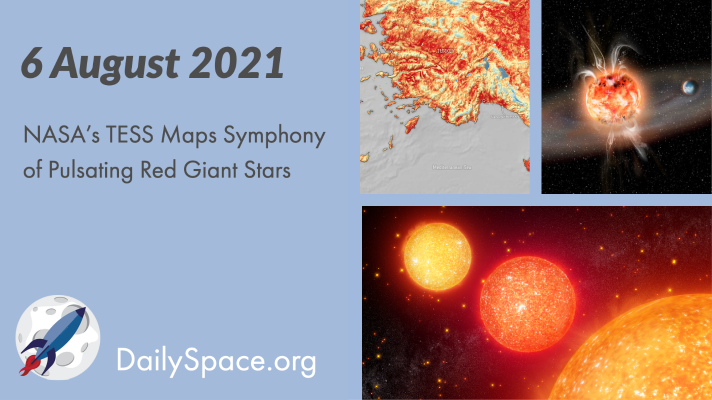
Aug 9, 2021 | Climate Change, Daily Space, Earth, Exoplanets, Neutron Stars / Pulsars, Planetary Nebulae, Stars, Supernovae
NASA’s TESS spacecraft, which is primarily used to search for exoplanets, has now observed a veritable symphony of pulsating red giant stars, each with its own internal vibrations. This work was presented at this week’s TESS Science Conference. Plus, some more climate change news (bad) and superflares may be less harmful to exoplanets than thought (good).
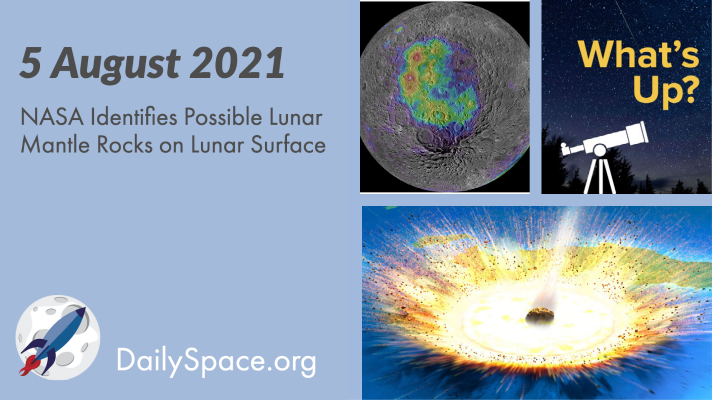
Aug 6, 2021 | Asteroids, Comets, Daily Space, Earth, Jupiter, Mercury, Moon, Sky Watching, Spacecraft, Stars, Supernovae, Venus, White Dwarfs
Two new studies have possibly identified regions on the Moon’s surface that could contain pieces of the lunar mantle, which would be possible sample targets for the Artemis mission. Plus, Venus gets a double flyby next week, and it’s all about asteroids and meteor showers in this week’s What’s Up.

Aug 5, 2021 | Daily Space, Random Space Fact, Rockets, Space China, Space History, Spacecraft, The Sun
On this week’s Rocket Roundup, China launches another military satellite, Rocket Lab and Arianespace return to flight, and a Chinese private rocket fails. Plus, this week in rocket history, we look back at the first time two crewed spacecraft from the same country were in orbit at the same time.
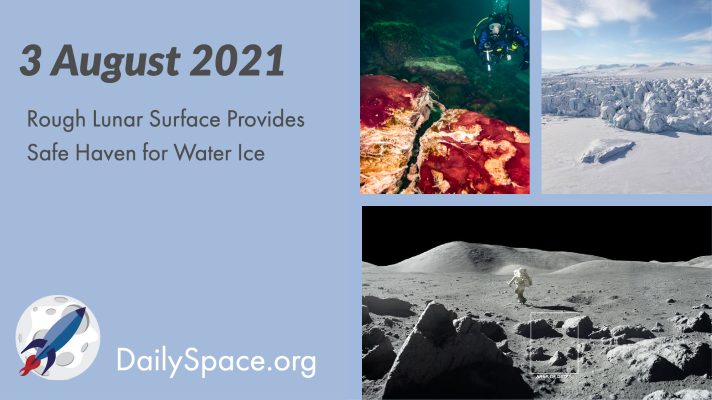
Aug 4, 2021 | Climate Change, Daily Space, Earth, Exoplanets, Moon, Observatories
Last year’s announcement that water ice had been found on the dayside of the Moon by the SOFIA observatory prompted scientists to understand just why that could work, and they found that the Moon’s rough surface creates frost pockets. Plus, all the climate change news over the millennia (Pamela’s back, everyone!).
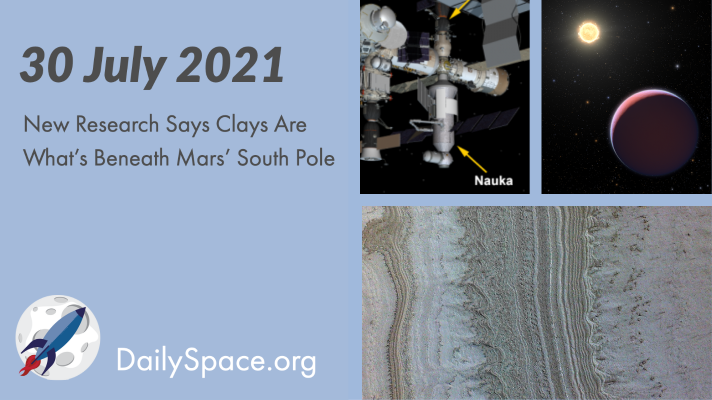
Aug 2, 2021 | Climate Change, Crewed Space, Daily Space, Earth, Exoplanets, Mars, Spacecraft
Continuing the ongoing saga of just what is under the Martian south polar ice caps, new research has once again analyzed radar data, and this time, scientists find that clays known as smectites are responsible for the bright reflections once thought to be subsurface lakes. Plus, drama with an ISS docking and some more oddball exoplanets to round out the week.
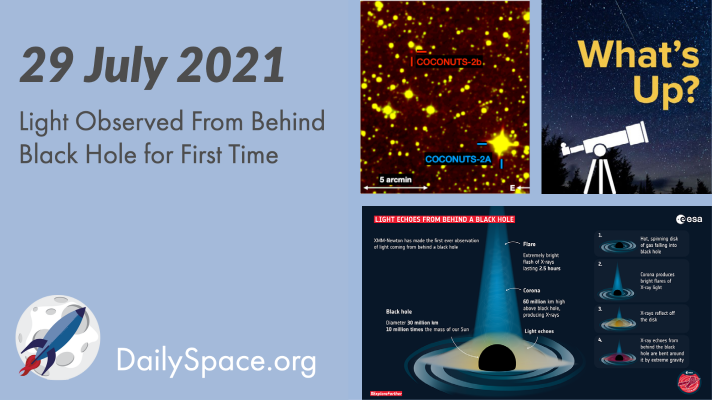
Jul 30, 2021 | Daily Space, Exoplanets, Physics, Sky Watching, Supermassive Black Holes
Once again, science has proved Einstein’s theories correct. This time, observations taken with ESA’s XMM-Newton and NASA’s NuSTAR space telescopes have seen x-ray flashes bent from behind a black hole. Plus, so many exoplanet stories (Beth was left in charge) and this week’s What’s Up.








 We record most shows live, on Twitch. Follow us today to get alerts when we go live.
We record most shows live, on Twitch. Follow us today to get alerts when we go live.